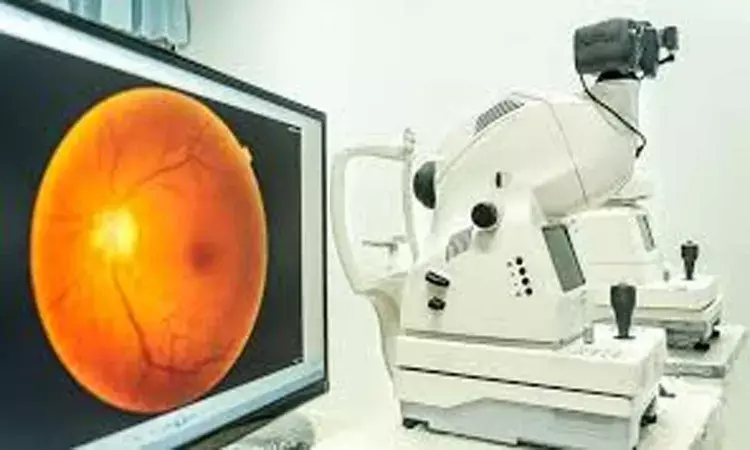- Home
- Medical news & Guidelines
- Anesthesiology
- Cardiology and CTVS
- Critical Care
- Dentistry
- Dermatology
- Diabetes and Endocrinology
- ENT
- Gastroenterology
- Medicine
- Nephrology
- Neurology
- Obstretics-Gynaecology
- Oncology
- Ophthalmology
- Orthopaedics
- Pediatrics-Neonatology
- Psychiatry
- Pulmonology
- Radiology
- Surgery
- Urology
- Laboratory Medicine
- Diet
- Nursing
- Paramedical
- Physiotherapy
- Health news
- Fact Check
- Bone Health Fact Check
- Brain Health Fact Check
- Cancer Related Fact Check
- Child Care Fact Check
- Dental and oral health fact check
- Diabetes and metabolic health fact check
- Diet and Nutrition Fact Check
- Eye and ENT Care Fact Check
- Fitness fact check
- Gut health fact check
- Heart health fact check
- Kidney health fact check
- Medical education fact check
- Men's health fact check
- Respiratory fact check
- Skin and hair care fact check
- Vaccine and Immunization fact check
- Women's health fact check
- AYUSH
- State News
- Andaman and Nicobar Islands
- Andhra Pradesh
- Arunachal Pradesh
- Assam
- Bihar
- Chandigarh
- Chattisgarh
- Dadra and Nagar Haveli
- Daman and Diu
- Delhi
- Goa
- Gujarat
- Haryana
- Himachal Pradesh
- Jammu & Kashmir
- Jharkhand
- Karnataka
- Kerala
- Ladakh
- Lakshadweep
- Madhya Pradesh
- Maharashtra
- Manipur
- Meghalaya
- Mizoram
- Nagaland
- Odisha
- Puducherry
- Punjab
- Rajasthan
- Sikkim
- Tamil Nadu
- Telangana
- Tripura
- Uttar Pradesh
- Uttrakhand
- West Bengal
- Medical Education
- Industry
Two Ultra-wide field retinal imaging techniques not to be used interchangeably

BOSTON - Researchers conducted a study to compare microaneurysm (MA) counts using ultrawide field colour images (UWF-CI) and ultrawide field fluorescein angiography (UWF-FA)and found that both are good for assessing microaneurysms with their individual plus points but both should modalities should not be used interchangeably.
Diabetic retinopathy can be diagnosed and graded with the use of a newer scanning technology called ultra-wide field (UWF) imaging, a system that generates high-quality pictures showing most of the retina.
Research from the Joslin Diabetes Center's Beetham Eye Institute has now shown that one technique, UFW fluorescein angiography, detects over three times more microaneurysms than UWF colour imaging, suggesting that the two modalities should not be used interchangeably when evaluating and treating this vision-threatening condition. The research is published this month in the British Journal of Ophthalmology.
"Existing research often uses fluorescein angiography and colour imaging as two interchangeable sides of the same coin when assessing microaneurysms. However, our research shows that these modalities aren't the same and we have to be cautious before using them in that way," says lead study author Mohamed Elmasry, M.D., Chief Retina Fellow at Joslin Diabetes Center.
With UWF imaging, clinicians are able to see over 80 per cent of the retina in a single picture. UWF colour imaging is used more frequently in the U.S. than UWF fluorescein angiography because the technology is non-invasive.
"We know that the amount and location of microaneurysms are key in determining the risk of diabetic retinopathy progression", says Lloyd Paul Aiello, M.D., Ph.D., Director of the Beetham Eye Institute, Professor of Ophthalmology at Harvard Medical School and senior author on the paper.
"With the growth of artificial intelligence, we need to know if we can automate the way we count these tiny blood vessel changes in order to grade retinopathy better, faster and more precisely predict its progression."
The study involved 193 patients with diabetic retinopathy--from mild disease to the most advanced stages of the disease. All patients had UWF color imaging and UWF fluorescein angiography done on the same day.
In total, 288 eyes were included in the analysis. Researchers manually counted microaneurysms on both color images and fluorescein angiography and then directly compared the results. Additionally, they compared the number of microaneurysms they identified at each level of disease severity and compared those results.
The study showed that, overall, fluorescein angiography detected 3.5-fold more microaneurysms than color imaging. This held true even after researchers adjusted for the patient's diabetes duration, average blood sugar levels and gender.
In addition, fluorescein angiography identified up to 3.5-fold more retinal areas with more than 20 microaneurysms (severe retinopathy) than color imaging.
However, when applying a correction factor of four to the fluorescein angiography results for each grade of disease severity, the interpretation of the two techniques became more comparable.
"This study should help inform artificial intelligence and other imaging studies looking to automate the grading process using ultra-widefield color imaging or fluorescein angiogram, and make them more precise and more comparable," says Dr. Aiello.
Diabetic retinopathy is a leading cause of blindness worldwide.
"The core message for the public is that if you have diabetes, it is essential that you be receiving regular ongoing eye examinations. In certain situations, a fluorescein angiogram is a very important test, and in others, color imaging is essential for grading or diagnosing diabetic retinopathy," says Dr. Elmasry. "It's also important for physicians to understand how, when and what test to order, and how each modality can affect patient care."
For more details click on the link: http://dx.doi.org/10.1136/bjophthalmol-2019-315807
Hina Zahid Joined Medical Dialogue in 2017 with a passion to work as a Reporter. She coordinates with various national and international journals and association and covers all the stories related to Medical guidelines, Medical Journals, rare medical surgeries as well as all the updates in the medical field. Email: editorial@medicaldialogues.in. Contact no. 011-43720751
Dr Kamal Kant Kohli-MBBS, DTCD- a chest specialist with more than 30 years of practice and a flair for writing clinical articles, Dr Kamal Kant Kohli joined Medical Dialogues as a Chief Editor of Medical News. Besides writing articles, as an editor, he proofreads and verifies all the medical content published on Medical Dialogues including those coming from journals, studies,medical conferences,guidelines etc. Email: drkohli@medicaldialogues.in. Contact no. 011-43720751


